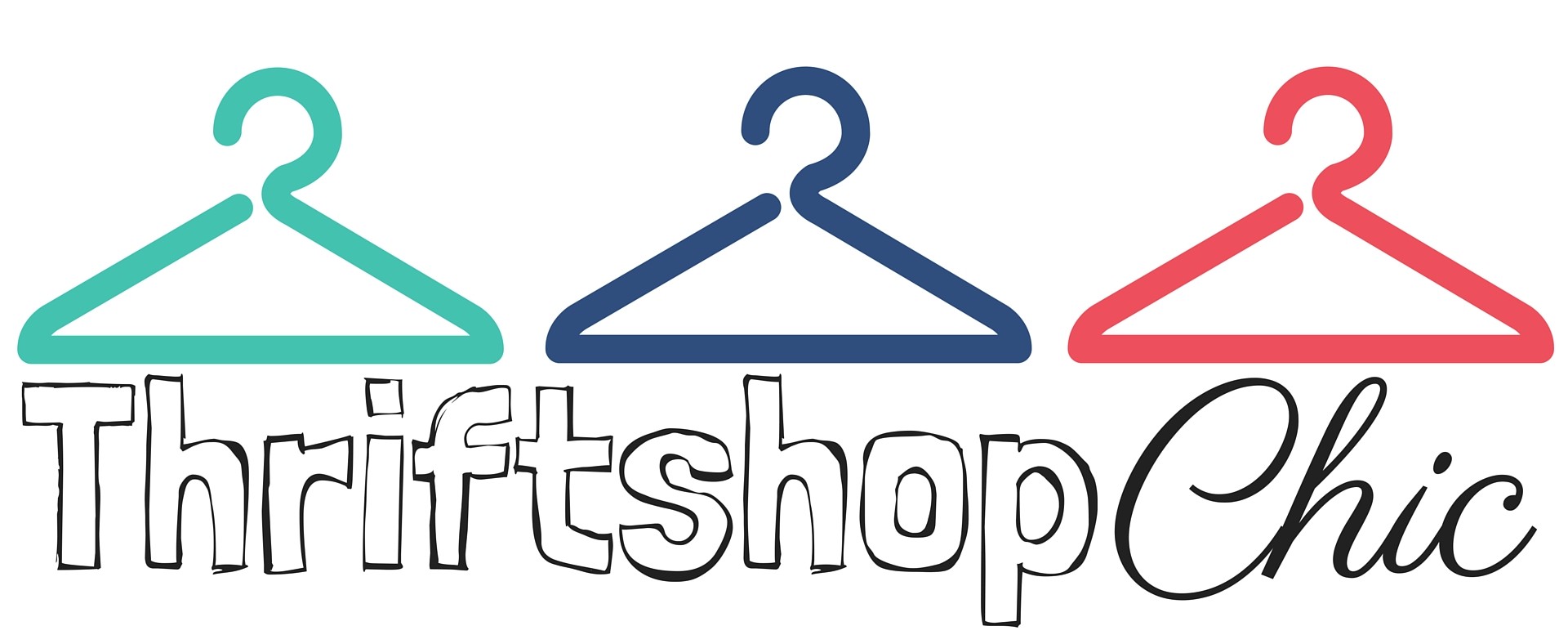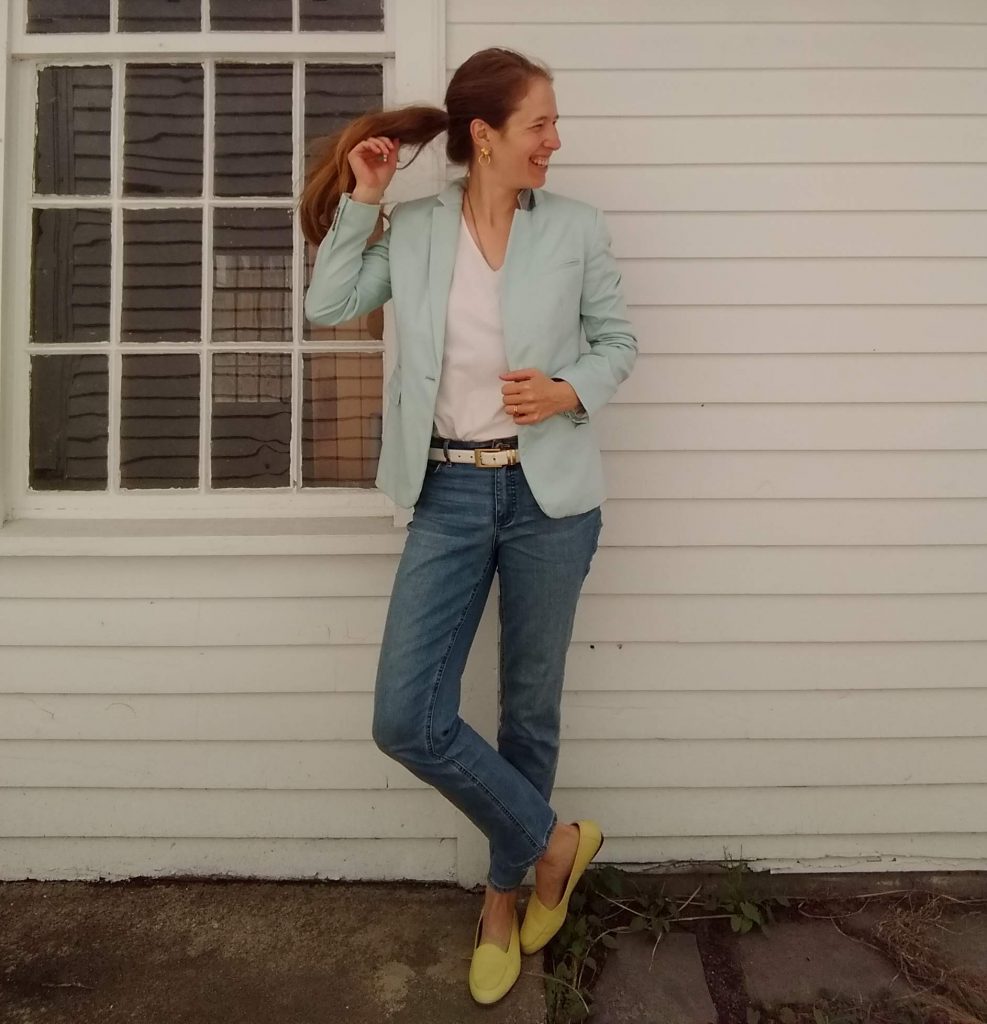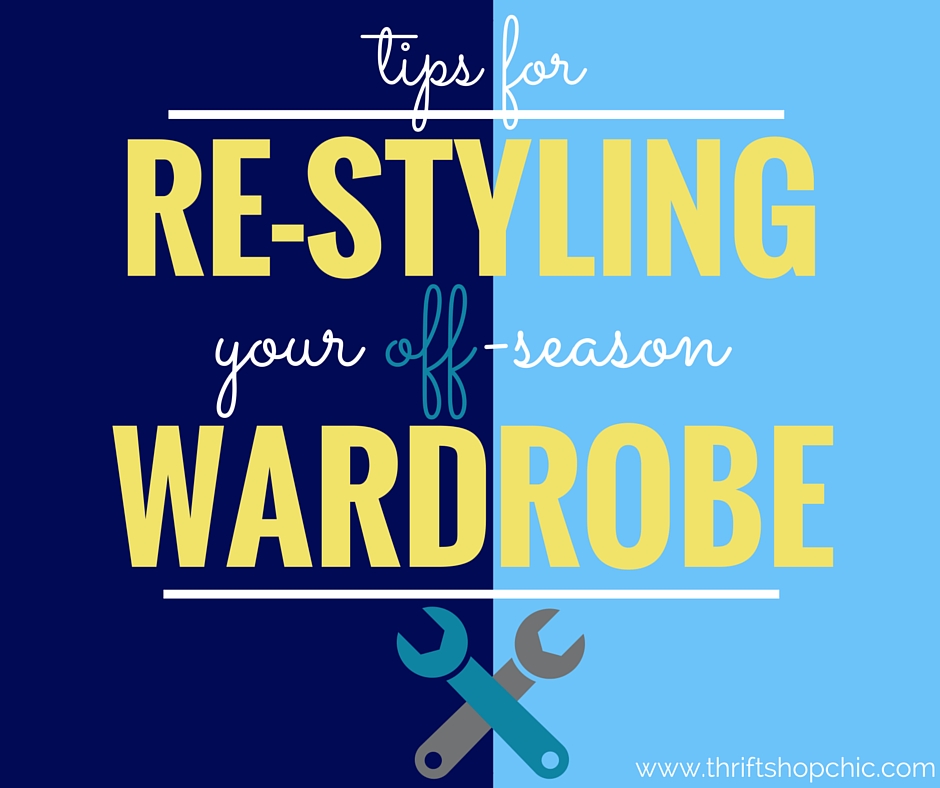Pretty much everybody who writes about building capsule or edited wardrobes recommends that you start by choosing a color palette.
Some of my favorite posts on this topic, also included in the recently updated “Resources” page: Anuschka Rees; Use Less; oodles of examples you just might want to steal on The Vivienne Files
Choosing a limited number of colors to focus on goes a long way to narrowing down your clothes to a manageable amount that plays well together (aka a capsule wardrobe), and helps you hone your shopping when you want to fill a wardrobe hole or augment what you already have. Color theory goes a long way towards ensuring the colors you choose actually work together; the first two posts linked above will help you get your head around the basic principles.
Seasonal color analysis (aka finding “your” colors) also hinges on color theory, and if you choose to get analyzed (and the analyst is skilled enough to get it right!), you’ll automatically end up with a color palette that goes well with your natural coloring. Here’s mine from my personal color analysis: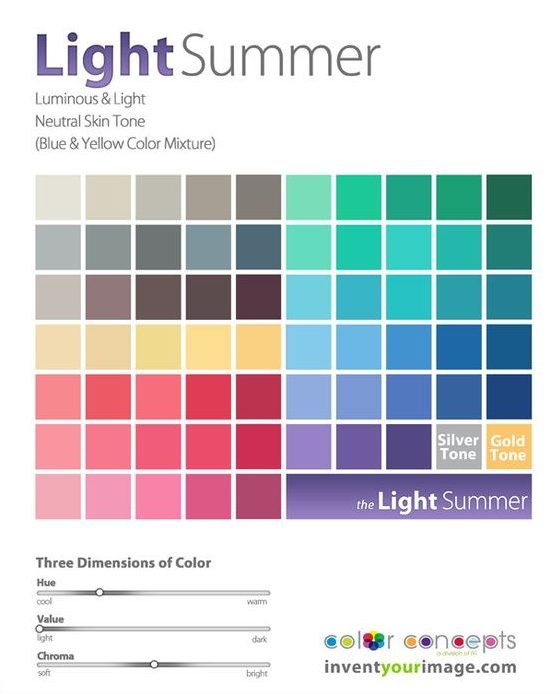
See that “three dimensions of color” chart at the bottom? That’s color theory at work – all these colors share about the same level of hue (warm to cool – or in artist speak, yellow to blue), value (light to dark), and chroma (soft to bright – more or less muted). And that’s why they all look good together.
But that’s still a lot of colors to choose from. And while they technically go together, you might not personally love every combo these colors can make. Maybe you hate green or love neutrals or don’t want to look like an Easter egg.
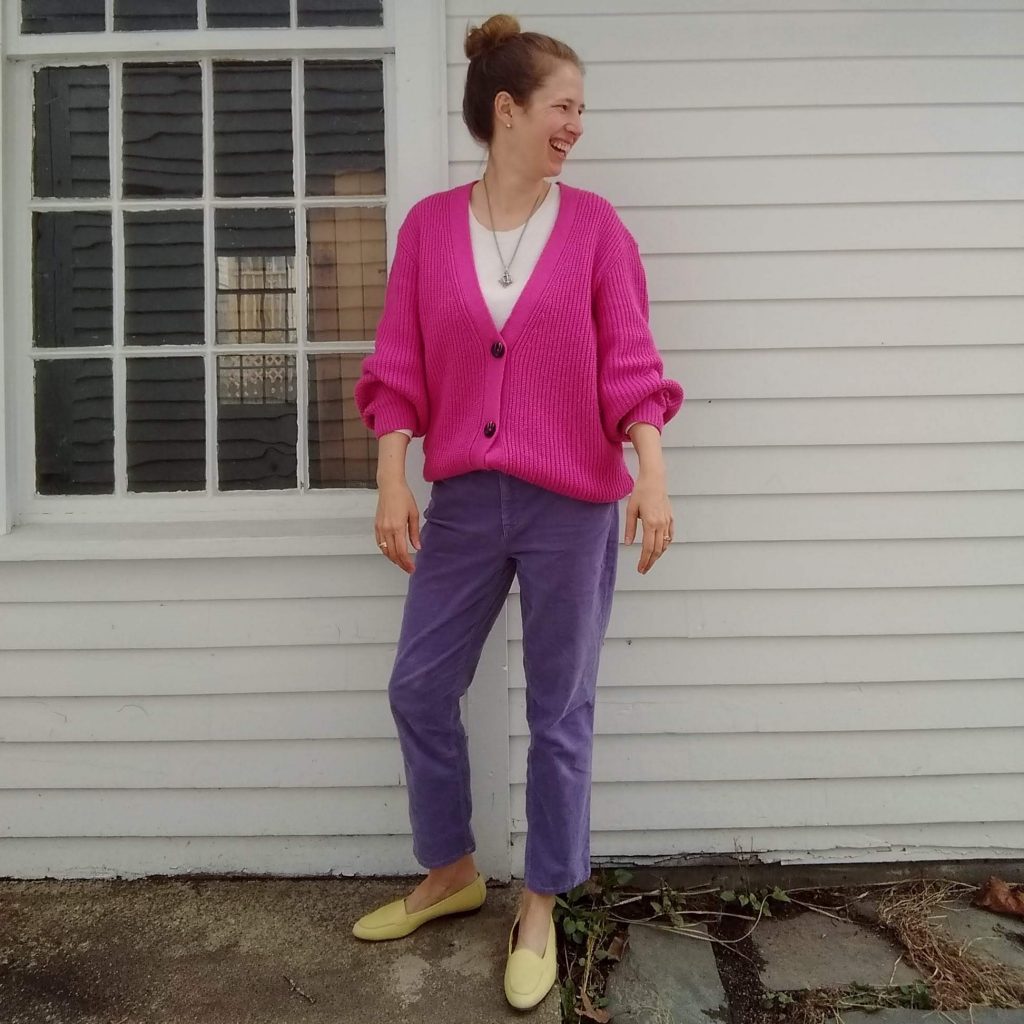
So a lot of color palette advice suggests narrowing it down to a few core colors, a few neutrals, and maybe an accent or two. Like this:
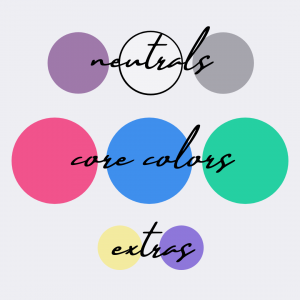
This is a general approximation of the colors I’m currently using in my wardrobe – I eyeballed them from the color-picker on my graphics maker. (And of course monitor colors vary – so if these don’t look precisely Light Summer to you, that’s why!)
Most of the clothes in my wardrobe are pink, blue, or green – with a good dose of neutral-friendly white, gray, and a purply-grey sometimes called faded wine (?? I didn’t make it up…). There are just a few items, like the shoes or pants above, that are purple or yellow, which end up giving a little visual interest to my basic color palette:
Personal color analysis did most of the work here for me, but narrowing down my color palette even further has kept me from trying to thrift pants or shirts in every color of my Light Summer palette. And committing to some neutrals, as a wise commenter suggested early in this process, has helped me avoid looking like an Easter egg – except when I want to :)
Do you have a color palette for your wardrobe? Does it help you thrift better/maintain a more coherent closet? Or do you go for whatever color strikes your fancy?
